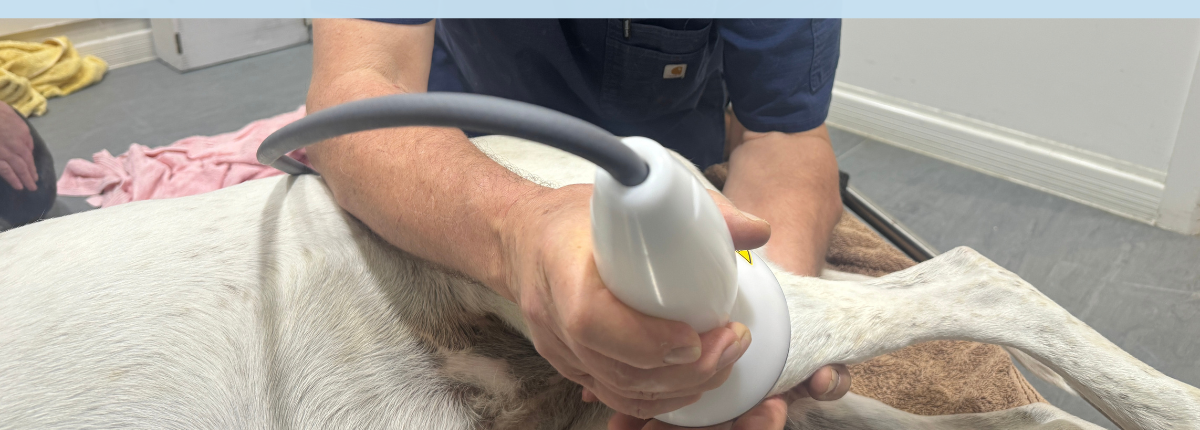Shock Wave Therapy for Dogs: How It Helps Arthritis, Injuries, and Slow Recovery
Is Your Dog Struggling with Pain or Slow Recovery?
If your dog is limping, slowing down, or not healing as expected after surgery or injury, you’re not alone. Many dog owners are told to “wait and see” or rely solely on rest and pain medication – but that often isn’t enough.
At The Dog Mobility Clinic, we use advanced, evidence-based therapies like shock wave treatment to give your dog the best chance at a full, pain-free life.
What Is Shock Wave Therapy?
Shock wave therapy (also known as extracorporeal shock wave therapy or ESWT) uses high-energy sound waves to penetrate deep into tissues. These waves stimulate healing and reduce pain by:
- Increasing blood flow
- Reducing inflammation
- Stimulating tissue regeneration
- Triggering the release of natural growth factors
We use the PulseVet shock wave system, one of the most advanced veterinary shock wave technologies available.
How Shock Wave Therapy Helps Dogs
Shock wave therapy is used to treat a wide range of orthopaedic and musculoskeletal conditions. It’s non-invasive, fast-acting, and works well alongside other rehabilitation therapies.
Arthritis / Degenerative Joint Disease
- Reduces chronic inflammation
- Improves joint flexibility
- Decreases pain without long-term medications
Tendon and Ligament Injuries
- Speeds up healing of cruciate injuries and strains
- Stimulates collagen production
- Reduces scar tissue and stiffness
Fractures and Delayed Healing
- Supports bone regeneration
- Encourages healing in slow-to-repair fractures
- Improves outcomes without surgical revision
Hip and Elbow Dysplasia
- Reduces joint pressure and pain
- Enhances movement when combined with rehab and weight control
Back and Spinal Conditions
- Eases lumbosacral and intervertebral disc discomfort
- Helps maintain mobility in ageing or neurologically compromised dogs
Chronic Wounds and Lick Granulomas
- Improves tissue repair
- Promotes healing of stubborn, non-closing wounds
Supporting Recovery After TPLO Surgery with Shock Wave Therapy
TPLO (Tibial Plateau Leveling Osteotomy) surgery is a common procedure for cruciate ligament injuries, but recovery can be challenging.
Shock wave therapy can:
- Reduce post-surgical inflammation and swelling
- Speed up bone and soft tissue healing
- Improve comfort and confidence in weight-bearing
Clinical studies and real-life results show that dogs receiving shock wave therapy after TPLO recover more efficiently and with fewer setbacks.
We typically begin treatment around 2–3 weeks post-op, depending on your dog’s condition, as part of an integrated rehab plan.
What to Expect from Treatment
- Each session lasts about 10–20 minutes
- Most dogs need 2–4 sessions, spaced a few weeks apart
- Some areas may require light sedation
- No downtime or cone needed – most dogs return to regular activity the same day
Many owners report noticeable improvement within the first few treatments.
Part of a Bigger Rehab Picture
Shock wave therapy works best when it’s part of a holistic plan. At The Dog Mobility Clinic, we combine it with:
- Tailored rehab exercises
- Laser therapy
- Home environment modification
- Pain management and education
Our outcomes-focused approach helps your dog heal better – and stay better.
Is Shock Wave Right for Your Dog?
It may be a great option if your dog:
- Is still limping or stiff after surgery or injury
- Has arthritis or joint disease
- Has a non-healing fracture or soft tissue strain
- Reacts to handling or pressure near joints or spine
- Isn’t improving with standard treatment alone
Take the Next Step Toward Better Mobility
Book a consultation to see if shock wave therapy is right for your dog.
You can also join our Online Rehab Community to connect with other dog owners, ask questions, and get ongoing expert advice.
Because your dog deserves to move well, feel well, and live well – every day.






